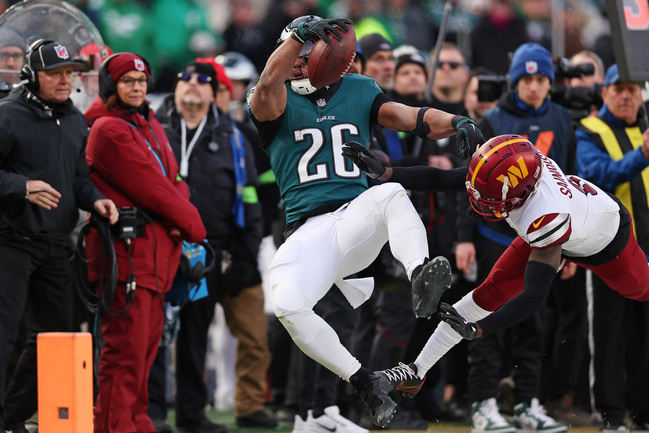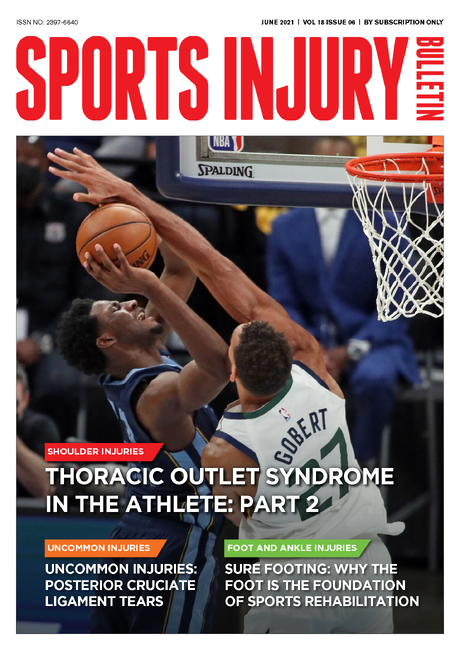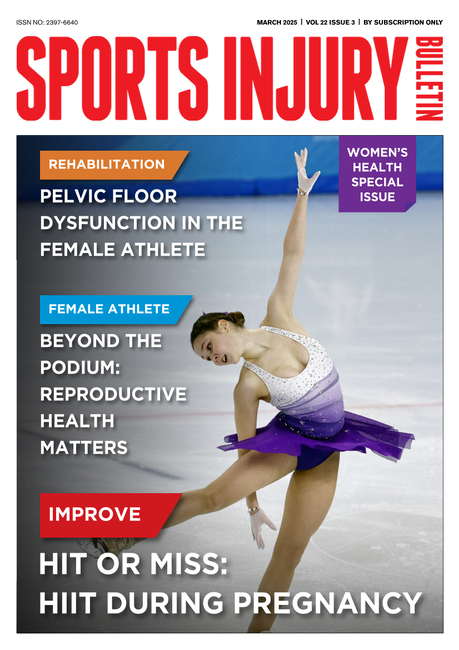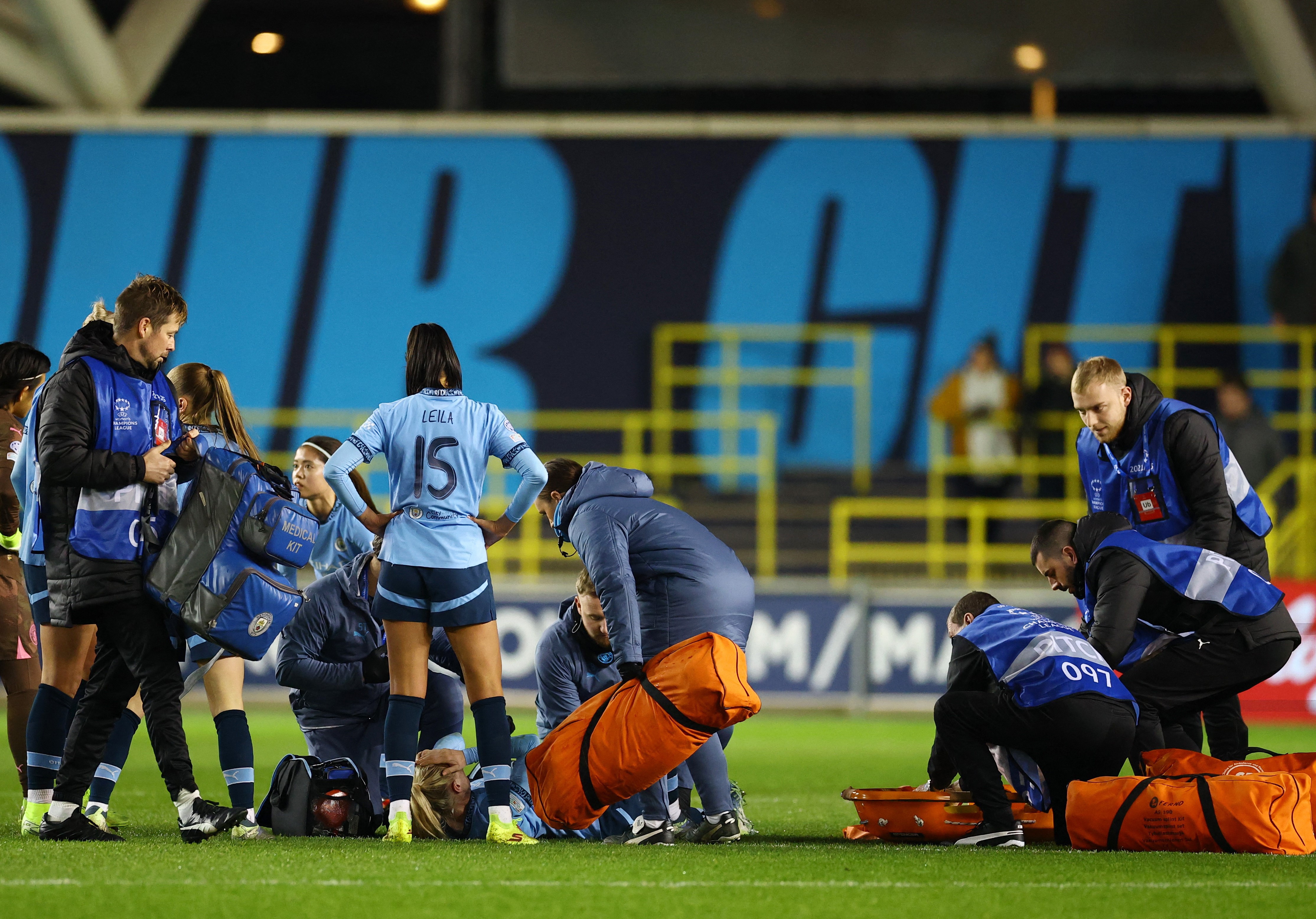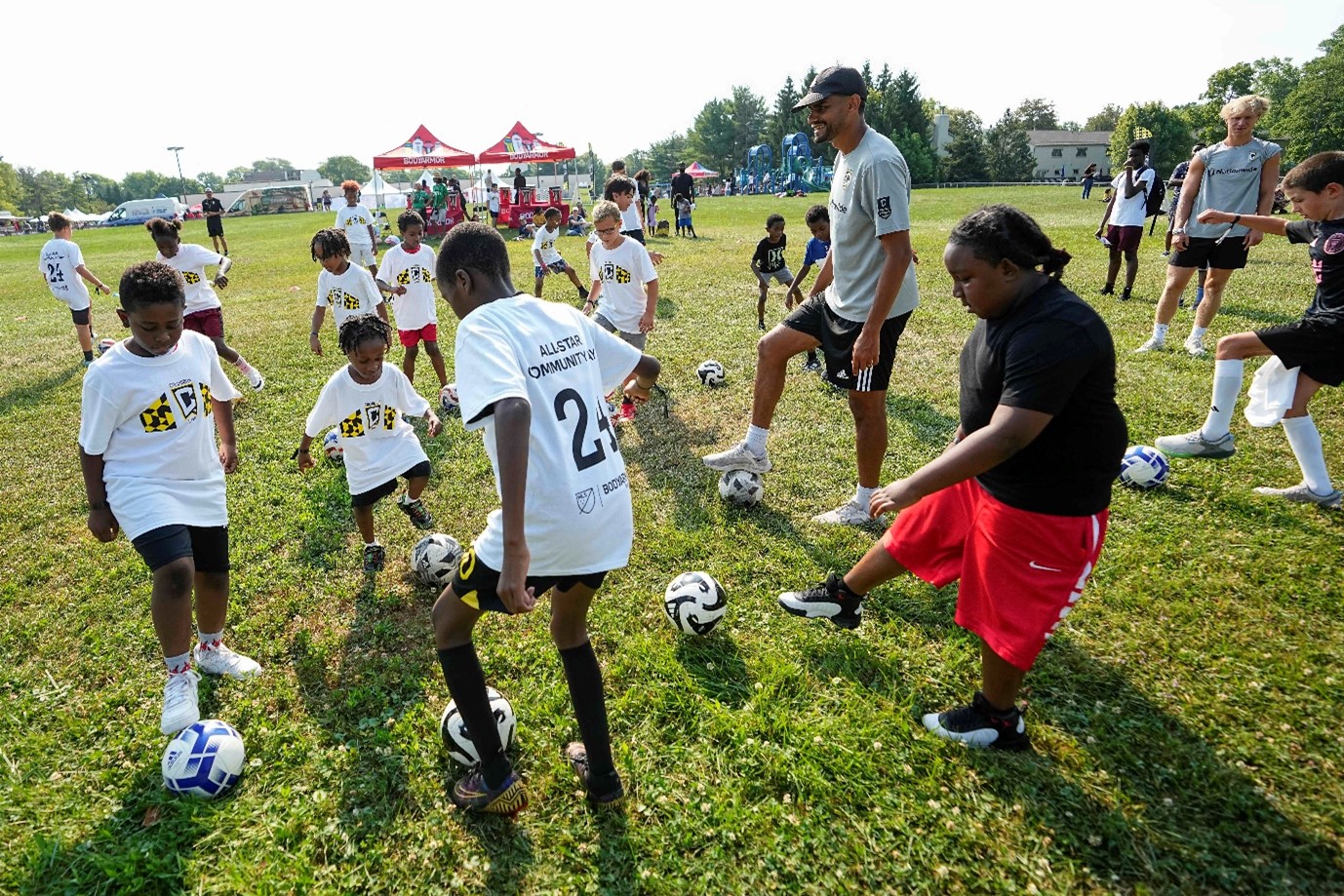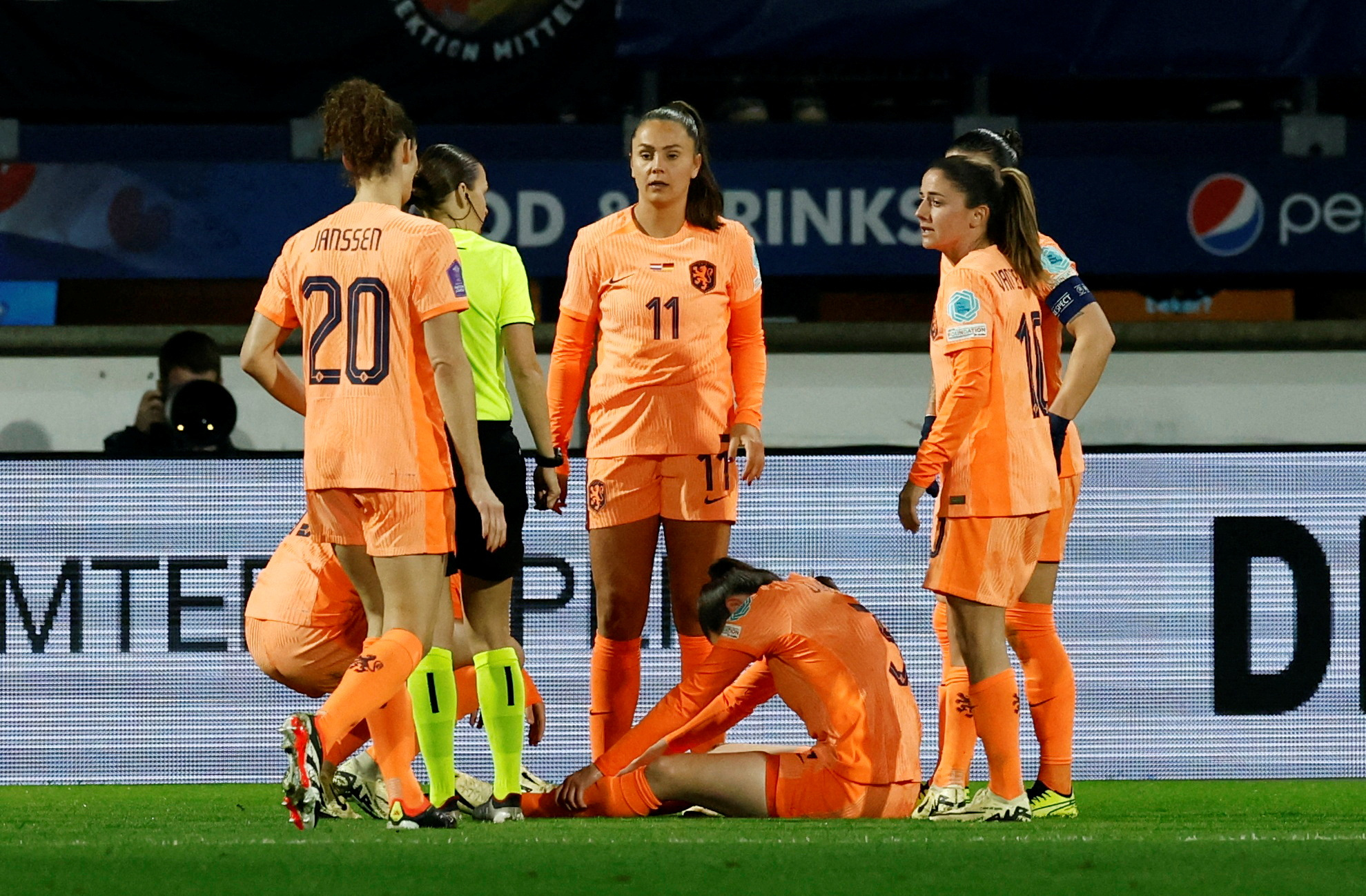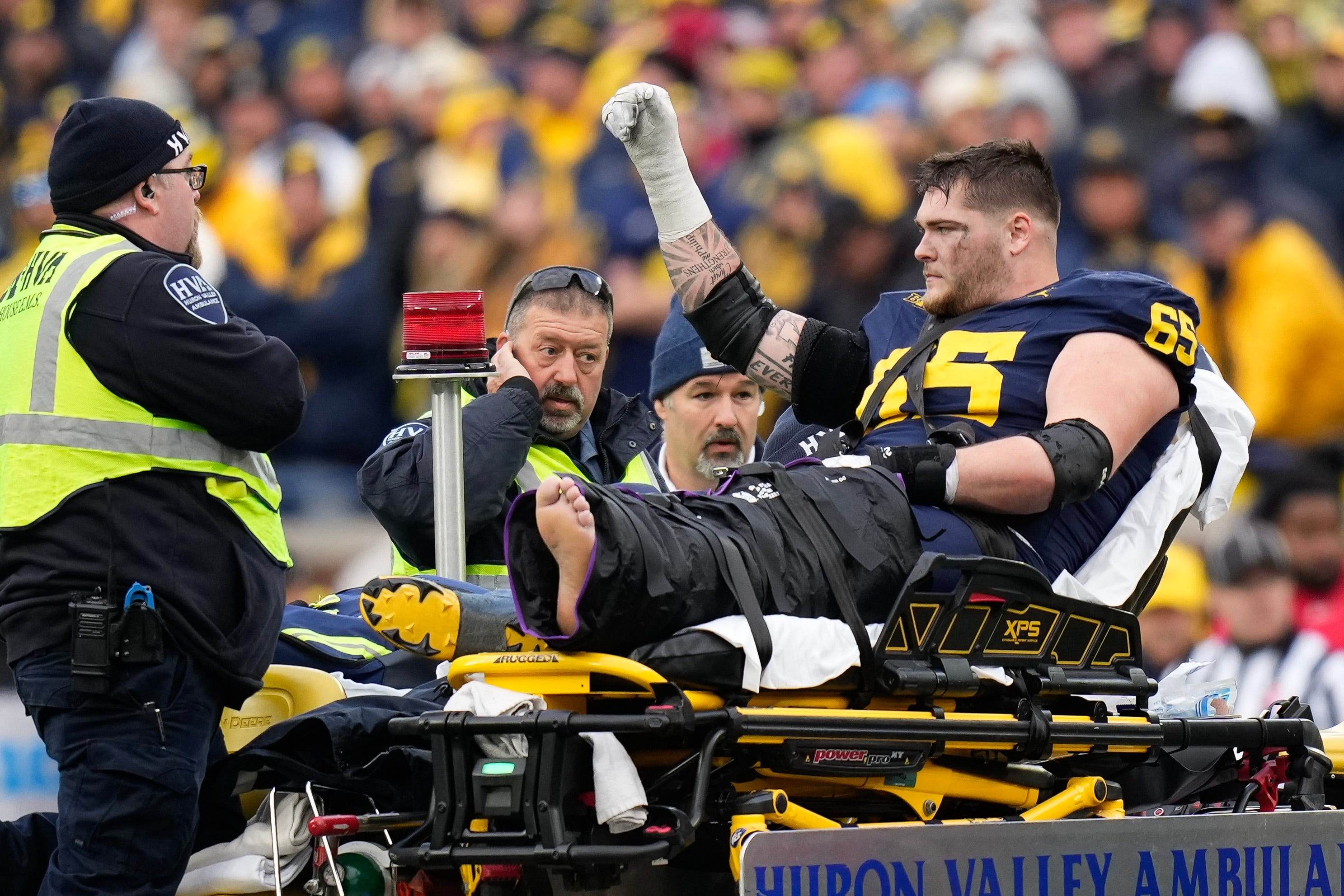You are viewing 1 of your 1 free articles
Beyond Injury: The Unrecognized Influence
Quantitative measures verify clinical treatment outcomes, which guide and define clinical practice. However, intangibles cannot be measured yet significantly impact clinical outcomes. Jason Tee discusses the unmeasurable and explores the importance of building trust and creating safe rehabilitation environments for athletes to thrive.
Philadelphia Eagles running back Saquon Barkley is hit by Washington Commanders cornerback Mike Sainristil during the first half in the NFC Championship game at Lincoln Financial Field. Mandatory Credit: Bill Streicher-Imagn Images
Zhanè Washington is well on her way to becoming a doctor, but she almost wasn’t. In a striking editorial published in the British Journal of Sports Medicine, Zhanè tells her story(1). A long and triple jump star in high school, she was destined for a track and field scholarship in university, but tragedy struck. Having already qualified for the state championships in her discipline, her coach approached her to join the school’s 4 x 100m relay team to help them qualify for the state championships, too. In that qualifying race, 10 meters from the finish line, she slipped and tore her hamstring, and in that moment, many of her hopes and dreams were rapidly extinguished.
Having had several scholarship offers, as news of her injury spread, the letters of rescindment started to arrive. She was left at home while her cohort went to college. When athletes define their identity according to their athletic competence, their self-worth is threatened by injury. In Zhanè’s words, “My hamstring tear did more damage to me internally than it ever could physically”.
Social identity theory proposes that identities are manifestations of a person’s identification with a particular group or social category. Athletic identity is the degree of strength and exclusivity to which a person identifies with the athlete’s role or the degree to which they devote special attention to sport relative to other engagements or activities. In the case of athletic identity, individuals identify with the athlete role, which has many positive and negative effects (see table 1).
Table 1: Athletic identity as a social identity construct(2)
| Positive effects | Negative effects |
| - Emotional connection to the sport. - Increased involvement in physical activity. - Increased commitment to training and goal orientation. - Better performance outcomes. - Increased enjoyment. |
- Lower tendency to seek help. - Increased gender role conflict. - Increased use of performance enhancers. - Overtraining. - Playing while injured. - Disordered eating. - Exceptional emotional difficulty adjusting to the cessation of participation. |
The next year and a half was tough for Zhanè. She worked odd jobs and trained and rehabilitated until she regained her athletic prowess and secured her scholarship. She is grateful to the rehabilitation professionals who managed her throughout this period. They facilitated her recovery and restored her hopes of attending college – but she challenges those medical professionals to do more!
“…responsibility to ensure health, not force performance.”
They should focus not only on restoring injured athletes but also on enhancing their overall well-being. It’s important to care for both the injury and the individual. Take the time to understand the circumstances and goals. During extended rehabilitation periods, practitioners should encourage athletes to explore other interests and provide the resources and support they need to do so. They should show confidence in their abilities and instill the belief that they can achieve their goals.
Zhanè ultimately competed in track and field for three further years as an undergraduate student. More importantly, after being forced to come to terms with the reality that athletic careers are fragile, She started to see herself as more than just an athlete. Taking her studies seriously, she applied the same commitment and dedication to her academics as she did to her training. As a result, she graduated as the valedictorian of her class and is currently studying to become a medical doctor.
Implications
Zhanè Washington’s story illustrates some concerns when a young person adopts an athletic identity. While there are a number of positive aspects to athletic identity, there is also a darker side: the presence of athletic identity may cause a person to make choices that are not in their best interests.
In line with this direction of thinking, a growing number of stakeholders are starting to question whether involvement in sports, particularly in high-level sports, is universally beneficial for the athlete. They question the consequences of the intensity, cost, and time spent away from home for traveling youth sports teams. The excessive demands placed on student-athletes in specialist sports schools impact the players who don’t make it and exit into regular life. Stakeholders must consider the academic and mental health impact of expecting students to dedicate many of their adolescence to high-level sports programs. The winners are easy to celebrate, but what happens to those who aren’t so lucky?
A growing amount of research is beginning to emerge investigating these questions. For example, researchers from Leeds Beckett University demonstrated that the psychological and social well-being of academy football players was no worse than that of age-matched pupils in regular schools(3). In another comparison, student-athletes at specialized sports schools miss more academic time than regular students, but additional support is generally in place for these student-athletes(4).
The Leeds Beckett University researchers conclude that high-level sports participation is not universally good or bad but that participants’ outcomes depend on a few important factors(5). The factors influencing positive and negative outcomes for athletes in high-performing sports organizations include:
- Organizational demands – is there a balance between performance and the athlete’s needs?
- Organizational values - If the organization encourages interests outside of sport, there will be growth in these areas.
- Interpersonal relationships – are the organization’s staff invested in the individuals or sporting success.
“Sports injury practitioners represent a vital support system for athletes.”
Athlete Protection
Athlete health is the “state of optimal physical, mental and social wellbeing, not merely the absence of illness or injury that limits participation”(6). Simply put, an athlete’s health allows them to pursue their life goals, including mental, physical, and social aspects and quality of life upon retirement from sport. The principal task for sports injury professionals is to safeguard this capacity; this is how they make an impact beyond the injury.
Performance and health are not always opposing forces; they can often be aligned (see figure 1). When athletes thrive and perform well, they are truly living their best lives. Athletic performance can significantly contribute to mental and social well-being, especially through the opportunities that participation in sports provides. Consider Zhanè’s story: her athletic achievements led to a scholarship that has positively influenced her professional trajectory. Success in sports, such as winning an Olympic medal or playing in a professional league, can also create exceptional earning opportunities.
The challenge for those working with athletes is their responsibility to ensure health, not force performance. If they support athletes in maintaining their optimal physical, mental, and social well–being, performance (sporting success) may follow as an outcome. Athletes can endure huge training loads and high levels of fatigue when these occur within a supportive framework that puts athlete well-being first.
A powerful example of these concepts in action is the case of Olympic gymnast Simone Biles. She captured the world’s attention by winning four gold medals at the 2016 Summer Olympics in Brazil. Returning to the 2020 Olympics in Tokyo, she was favored to win again. Still, she withdrew from several events due to intense psychological pressure, including experiencing "the twisties," a mental block that makes it difficult for gymnasts to control their bodies while in the air. Biles mentioned feeling "overwhelmed" and "like I was going to pass out" before her first event. Despite these challenges, she still won silver and bronze medals in Tokyo, demonstrating her status as one of the best gymnasts in the world.
“People are more than just athletes aiming for medals…”
However, she faced immense pressure to continue, especially in team events, as she didn’t want to let her coaches or teammates down. Fortunately, she received unwavering support from her teammates, coaches, and support staff. Biles took some time away from the sport to engage in counseling, which helped her rediscover her love for gymnastics and led her to become an internationally recognized mental health advocate. Ultimately, Simone returned to the Olympics in 2024 in a healthier mental state and led Team USA, winning three more Olympic gold medals.
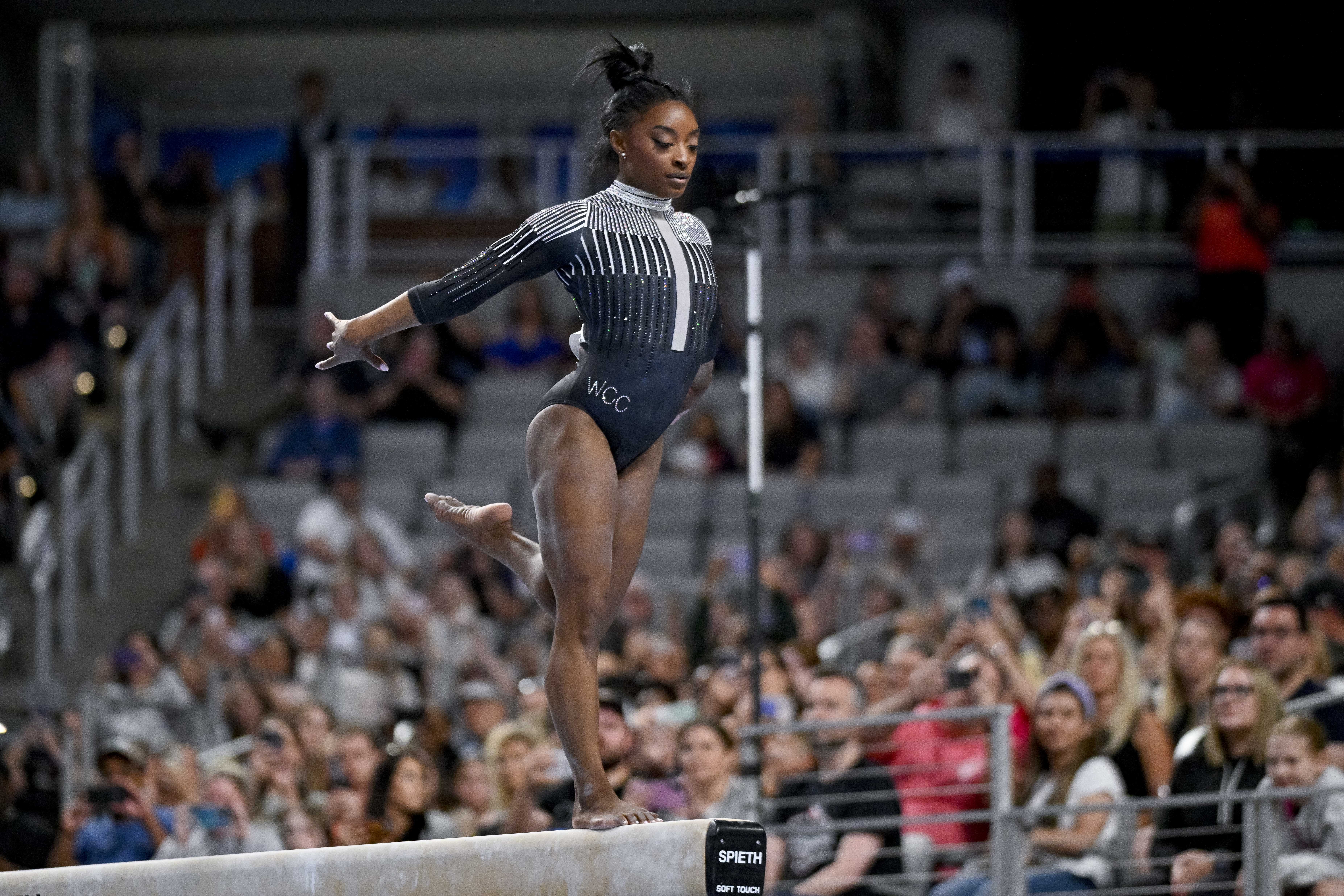
Summary
Sports injury professionals represent a vital support system for athletes. While their job description describes them as responsible for preventing injuries and rehabilitating those that occur, their influence extends well beyond torn muscles and strained tendons. Ultimately, they are responsible for the “health” of those in their care. Health is multifaceted but includes physical, mental, and social well-being.
People are more than just athletes aiming for medals; they are husbands, wives, parents, partners, students, employees, and active members of their communities. They have hopes, dreams, struggles, and failures, and not all their experiences revolve around achieving sporting excellence. Practitioners are uniquely positioned to provide athletes with the support, care, and inspiration they need to thrive in their sports and other aspects of their lives.
References
1. Br J Sports Med 2024 Feb 9;58(4):237-238
2. Int J Environ Res Public Health. 2021 Jul 8;18(14):7331
3. J Sports Sci. 2020 Jun-Jun;38(11-12):1387-1398
4. Sports Med. 2022 Aug;52(8):1879-1917
5. Sport, Exercise, and Performance Psychology, 2021 Aug 10(3), 359-380
6. Sports Med. 2023 Aug;53(8):1479-1489
7. Sport and Exercise Medicine Switzerland. 2020 June
Newsletter Sign Up
Subscriber Testimonials
Newsletter Sign Up
Coaches Testimonials
Be at the leading edge of sports injury management
Our international team of qualified experts (see above) spend hours poring over scores of technical journals and medical papers that even the most interested professionals don't have time to read.
For 17 years, we've helped hard-working physiotherapists and sports professionals like you, overwhelmed by the vast amount of new research, bring science to their treatment. Sports Injury Bulletin is the ideal resource for practitioners too busy to cull through all the monthly journals to find meaningful and applicable studies.
*includes 3 coaching manuals
Get Inspired
All the latest techniques and approaches
Sports Injury Bulletin brings together a worldwide panel of experts – including physiotherapists, doctors, researchers and sports scientists. Together we deliver everything you need to help your clients avoid – or recover as quickly as possible from – injuries.
We strip away the scientific jargon and deliver you easy-to-follow training exercises, nutrition tips, psychological strategies and recovery programmes and exercises in plain English.
